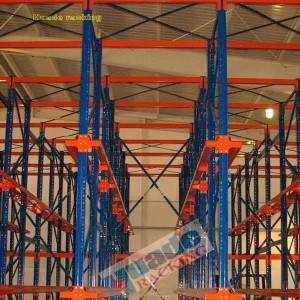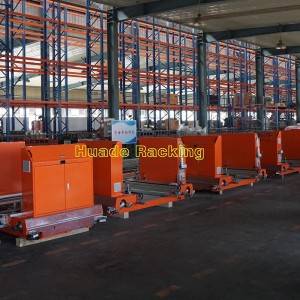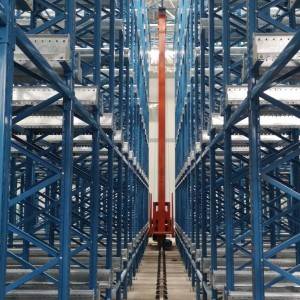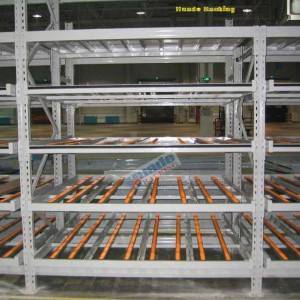Drive In Rack
Short Description:
Drive in racks make maximum use of horizontal and vertical space by eliminating work aisles for forklift trucks between racks, forklifts enter the storage lanes of drive-in racks to store and retrieve pallets.
Drive in racks make maximum use of horizontal and vertical space by eliminating work aisles for forklift trucks between racks, forklifts enter the storage lanes of drive-in racks to store and retrieve pallets. Therefore operating aisles are eliminated saving a great deal of available space. This system fits the scenario where space utilization is more important than the selectivity of stored products, it is ideal for storing large quantities of homogeneous palletized goods, in another words, a large of number of identical items.
The loaded pallets are placed one by one on two rails in the lane, resulting in a fixed sequence for stacking and picking, there are basically two types of such racks, drive in and drive through.
Drive in rack
The forklift can drive in only on one side of the racking lane, the last pallet in is the first pallet out. This type of rack is idea for storing material with low turnover.
Drive through rack
The forklift can drive in on both sides of the racking lane (front and rear), the first pallet in is the first pallet out. This type of rack is best applied to high turnover storage.
Because the forklift drives in the racking lane, anti-collisions must be considered in the design of solution, usually the ground rails are included to protect the uprights and guide the forklift trucks, the uprights are painted with high visibility, and pallets with bright color are recommended to help operators stack and retrieve the pallets quickly and accurately.
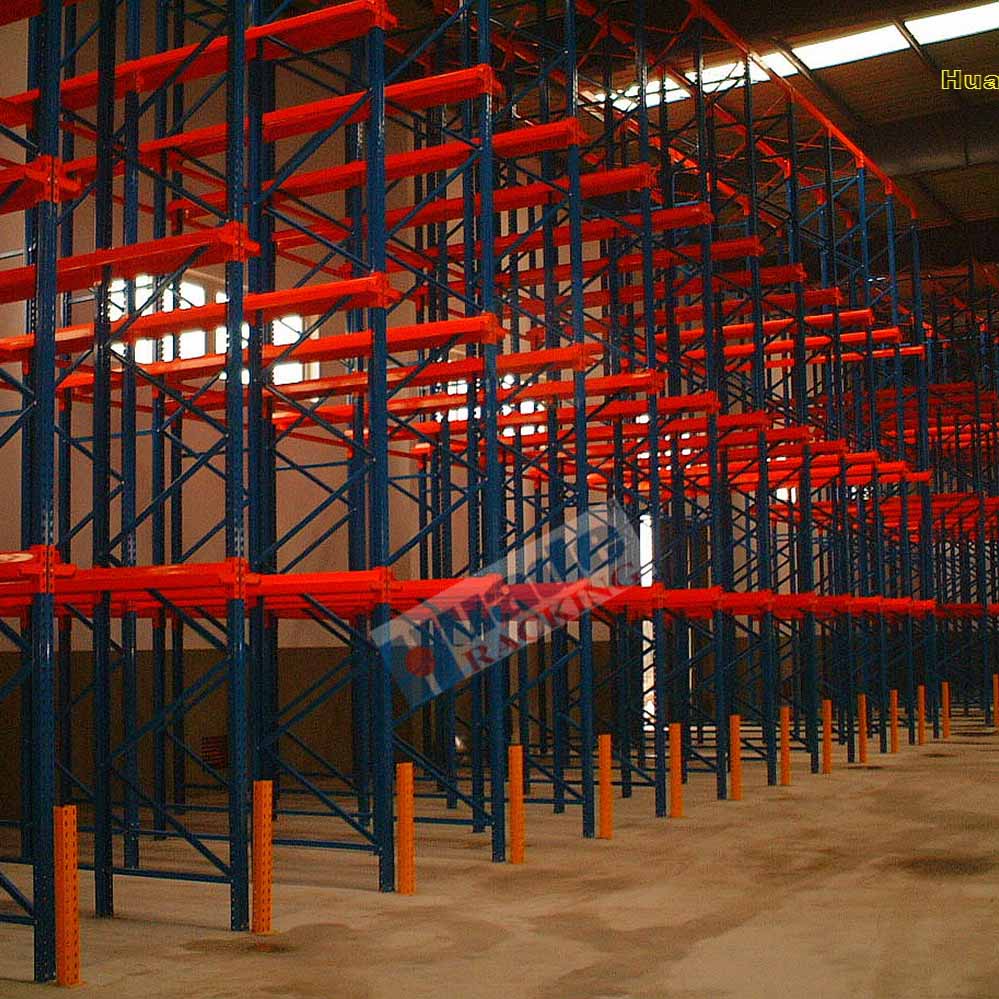
Maximise utilization of floor space
Eliminate unneeded operating aisles
Easily expandable for maximum flexibility
Perfect for large quantities of products with few variety
FIFO/LIFO for choice, ideal for seasonal warehouse
Safe and smooth storage of pressure-sensitive goods
Frequently used in cold storage because of the excellent space utilization saving costs of temperature control

